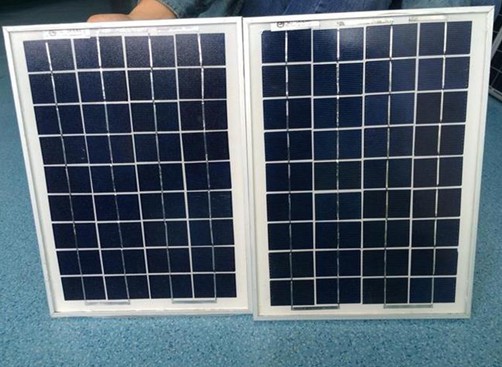How Photovoltaic Panels Work: The Miraculous Conversion of Sunlight into Electricity
As an important renewable energy technology, photovoltaic cells have attracted much attention in today’s world. This article will analyze the working principle of photovoltaic cells in detail and give you an in-depth understanding of how this green energy technology converts solar energy into electrical energy to provide continuous power for our lives.

Basic structure of photovoltaic cells
The core part of the photovoltaic cell consists of photoelectric conversion layer, battery backsheet, surface glass, frame and adhesive. These components work together to ensure that photovoltaic cells efficiently convert solar energy into electricity.
The concept of photovoltaic result
The concept of photovoltaic result The photovoltaic effect is the basis for the operation of photovoltaic cells. When sunlight strikes the photoelectric conversion layer of a solar battery, photons engage with atoms in the product, causing electrons to be delighted from the atoms to form photogenerated electron-hole sets. These photogenerated electron-hole sets are separated under the action of the built-in electric field to form photogenerated current, therefore realizing the conversion of solar energy into electrical energy.
The formation and function of pn junction
The pn junction is a key structure in photovoltaic cells and is formed by the contact between p-type semiconductor and n-type semiconductor. In the pn junction, due to the different charge distributions of the two semiconductors, a built-in electric field is formed. This electric field separates photogenerated electron-hole pairs, causing electrons and holes to move to both ends of the battery respectively, further promoting the generation of photogenerated current.
Materials and Types of Photovoltaic Cells
Photovoltaic cells come in a variety of materials and types, including polycrystalline silicon, monocrystalline silicon, thin-film solar cells, and more. These different types of photovoltaic cells each have their own advantages and disadvantages and are suitable for different application scenarios. For example, polycrystalline silicon photovoltaic cells have high photoelectric conversion efficiency and low cost, and are suitable for large-scale photovoltaic power stations; while thin-film solar cells are thin, flexible, and suitable for distributed photovoltaic power generation and building integration. .
Detailed explanation of the working principle of photovoltaic cells
In photovoltaic cells, when sunlight strikes the photoelectric conversion layer, photons interact with atoms in the material, exciting electrons to jump from the valence band to the conduction band, thereby generating photogenerated electron-hole pairs. These photogenerated electron-hole pairs are separated under the action of the built-in electric field, and the electrons and holes move toward the n-type and p-type semiconductors respectively. Electrons flow through the n-type semiconductor to the positive electrode of the battery, while holes flow through the p-type semiconductor to the negative electrode of the battery. In this way, a photogenerated current is formed in the external circuit of the solar battery. At the same time, a voltage difference will happen across the two ends of the solar battery, which is the photovoltaic voltage. When a solar battery is connected to an external load, the photogenerated existing and photovoltaic voltage will drive the load to convert solar power into electrical energy.
In short, photovoltaic cells convert solar energy into electrical energy through the photovoltaic effect, and its working principle involves many aspects such as photoelectric conversion layers, pn junctions, and photogenerated electron-hole pairs. With the continuous advancement and innovation of science and technology, the performance and efficiency of photovoltaic cells will continue to improve, contributing more clean energy to the sustainable development of mankind.
Henan, China
